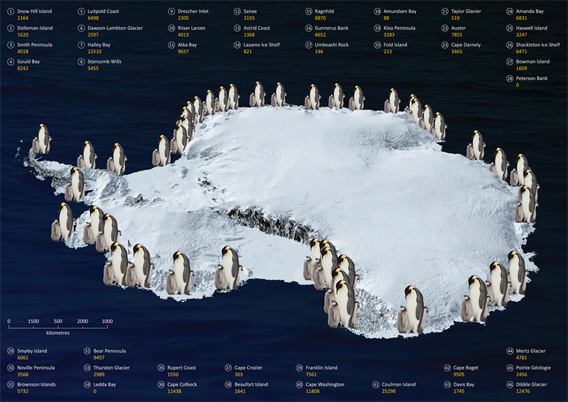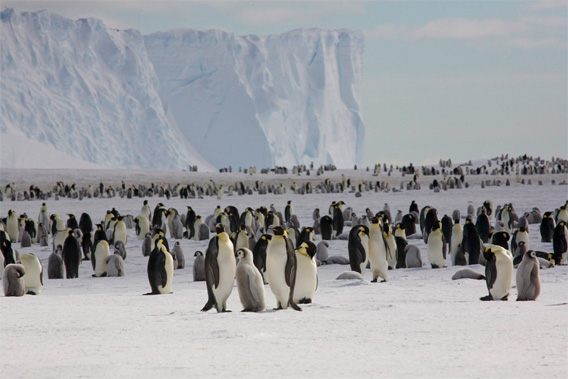
 The population of emperor penguins in Antarctica is nearly twice as
high as previously estimated according to a new satellite-based assessment.
The population of emperor penguins in Antarctica is nearly twice as
high as previously estimated according to a new satellite-based assessment.The census technique is based on detecting penguin colonies and then counting individual birds. Colonies are located by looking for large patches of ice discolored by penguin poop or guano.
This approach turned up 44 colonies across Antarctica — including seven that hadn't been detected previously — and 595,000 birds. The emperor population had previously been thought to range between 170,000-350,000.
“The methods we used are an enormous step forward in Antarctic ecology because we can conduct research safely and efficiently with little environmental impact, and determine estimates of an entire penguin population, said co-author Michelle LaRue from the University of Minnesota in a statement. “The implications of this study are far-reaching: we now have a cost-effective way to apply our methods to other poorly-understood species in the Antarctic, to strengthen on-going field research, and to provide accurate information for international conservation efforts.”
Source

























































